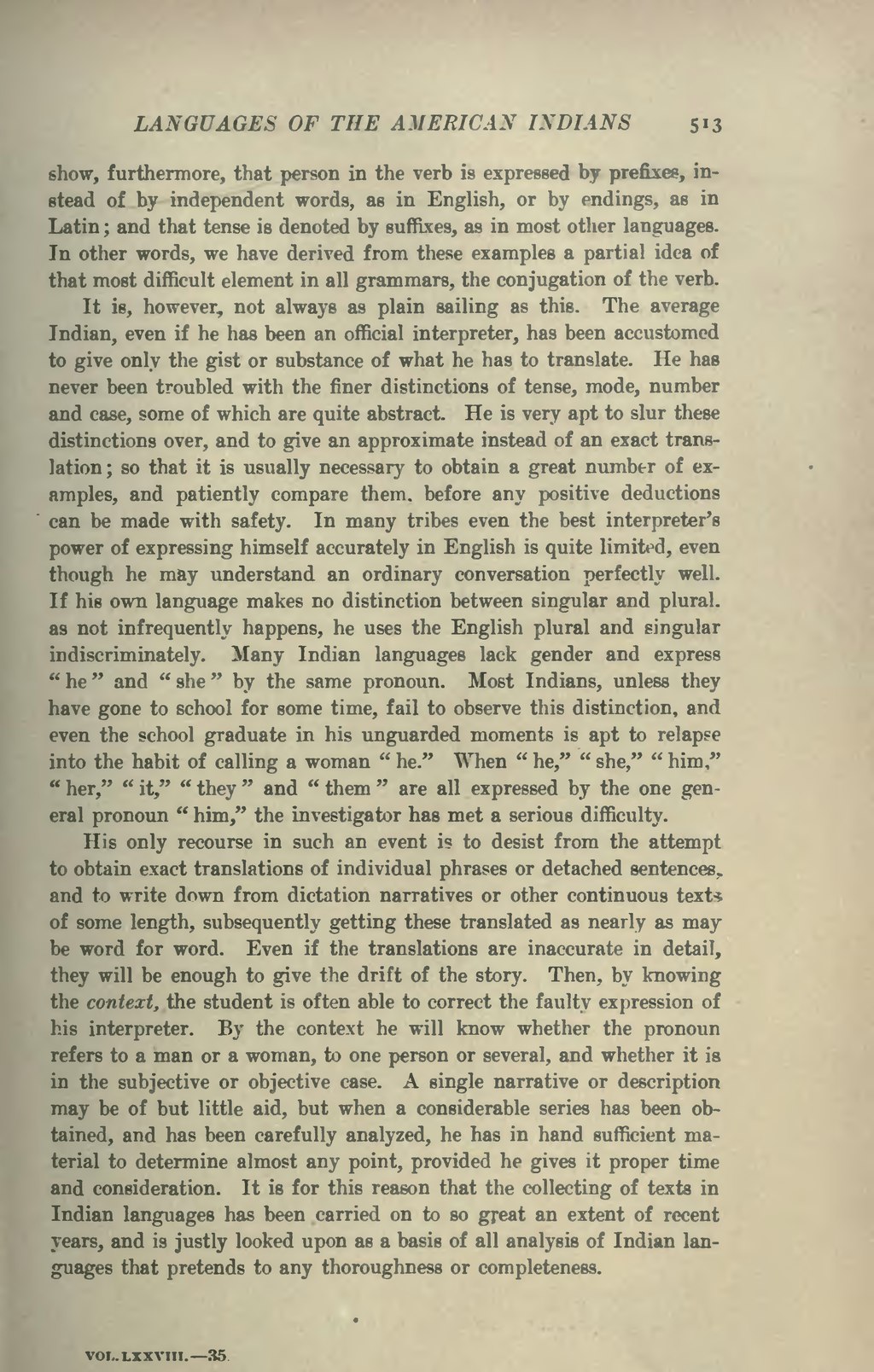show, furthermore, that person in the verb is expressed by prefixes, instead of by independent words, as in English, or by endings, as in Latin; and that tense is denoted by suffixes, as in most other languages. In other words, we have derived from these examples a partial idea of that most difficult element in all grammars, the conjugation of the verb.
It is, however, not always as plain sailing as this. The average Indian, even if he has been an official interpreter, has been accustomed to give only the gist or substance of what he has to translate. He has never been troubled with the finer distinctions of tense, mode, number and case, some of which are quite abstract. He is very apt to slur these distinctions over, and to give an approximate instead of an exact translation; so that it is usually necessary to obtain a great number of examples, and patiently compare them, before any positive deductions can be made with safety. In many tribes even the best interpreter's power of expressing himself accurately in English is quite limited, even though he may understand an ordinary conversation perfectly well. If his own language makes no distinction between singular and plural, as not infrequently happens, he uses the English plural and singular indiscriminately. Many Indian languages lack gender and express "he" and "she" by the same pronoun. Most Indians, unless they have gone to school for some time, fail to observe this distinction, and even the school graduate in his unguarded moments is apt to relapse into the habit of calling a woman "he." When "he," "she," "him," "her," "it," "they" and "them" are all expressed by the one general pronoun "him," the investigator has met a serious difficulty.
His only recourse in such an event is to desist from the attempt to obtain exact translations of individual phrases or detached sentences, and to write down from dictation narratives or other continuous texts, of some length, subsequently getting these translated as nearly as may be word for word. Even if the translations are inaccurate in detail, they will be enough to give the drift of the story. Then, by knowing the context, the student is often able to correct the faulty expression of his interpreter. By the context he will know whether the pronoun refers to a man or a woman, to one person or several, and whether it is in the subjective or objective case. A single narrative or description may be of but little aid, but when a considerable series has been obtained, and has been carefully analyzed, he has in hand sufficient material to determine almost any point, provided he gives it proper time and consideration. It is for this reason that the collecting of texts in Indian languages has been carried on to so great an extent of recent years, and is justly looked upon as a basis of all analysis of Indian languages that pretends to any thoroughness or completeness.

